Walter Crane (1845-1915)
Get a Crane Certificate of Authenticity for your painting (COA) for your Crane drawing.
For all your Crane artworks you need a Certificate of Authenticity (COA) in order to sell, to insure or to donate for a tax deduction.
Getting a Crane Certificate of Authenticity (COA) is easy. Just send us photos and dimensions and tell us what you know about the origin or history of your Crane painting or drawing.
If you want to sell your Crane painting or drawing use our selling services. We offer Crane selling help, selling advice, private treaty sales and full brokerage.
We have been authenticating Crane and issuing certificates of authenticity since 2002. We are recognized Crane experts and Crane certified appraisers. We issue COAs and appraisals for all Crane artworks.
Our Crane paintings and drawings authentications are accepted and respected worldwide.
Each COA is backed by in-depth research and analysis authentication reports.
The Crane certificates of authenticity we issue are based on solid, reliable and fully referenced art investigations, authentication research, analytical work and forensic studies.
We are available to examine your Crane painting or drawing anywhere in the world.
You will generally receive your certificates of authenticity and authentication report within two weeks. Some complicated cases with difficult to research Crane paintings or drawings take longer.
Our clients include Crane collectors, investors, tax authorities, insurance adjusters, appraisers, valuers, auctioneers, Federal agencies and many law firms.
We perform Walter Crane art authentication, appraisal, certificates of authenticity (COA), analysis, research, scientific tests, full art authentications. We will help you sell your Walter Crane or we will sell it for you.
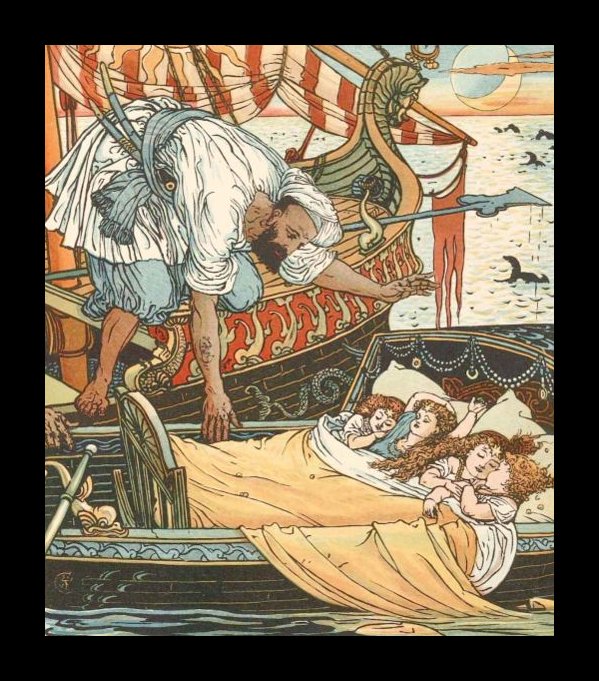
Princess Belle Etoile
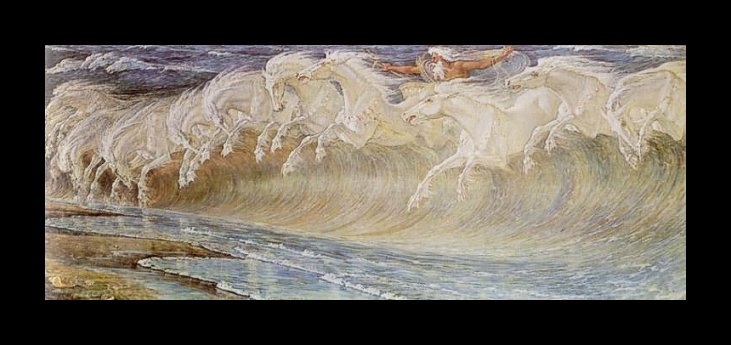
Horses of Neptune
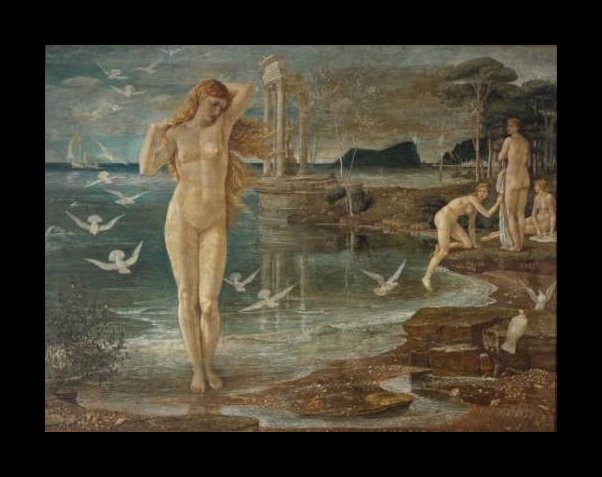
The Renaissance of Venus

Venus and Cupid
Walter Crane was an English golden age illustrator and artist, and was a member of the Arts and Crafts movement. He was an illustrator of children’s books and also created paintings, drawings, pottery, ceramic tiles, textiles, wallpaper and other decorative arts. He was one of the most prominent artists of his time and became known for his whimsical style, which included allegorical paintings created in a variety of mediums and materials.
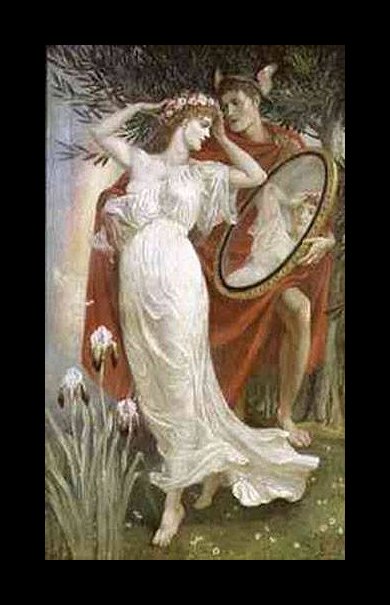
Art and Life
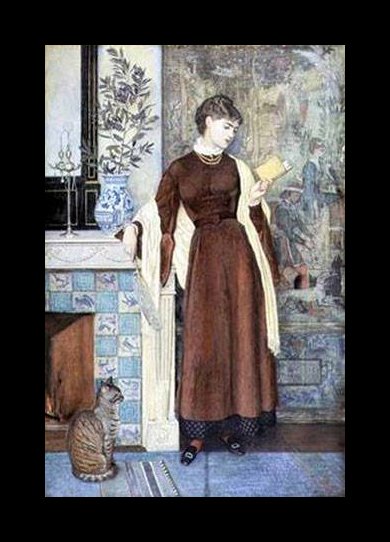
Portrait of a Lady
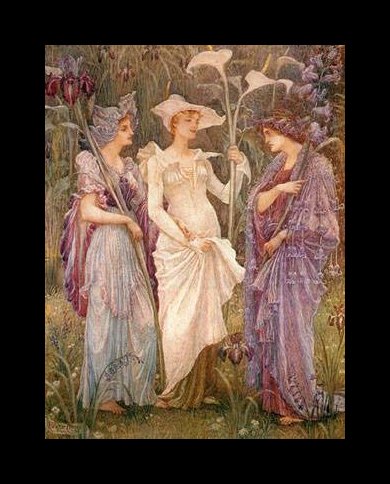
Signs of Spring
Crane was born in Liverpool, the son of portrait painter and miniaturist Thomas Crane, and likely received some of his initial training from his father. Crane’s earliest influences were the pre-Raphaelites, and he studied under John Ruskin. Crane had a number of other influences, including an apprenticeship with engraver William James Linton. However, it was perhaps the influence of Japanese-style woodcuts that influenced Crane’s style the most, and led him to create some of the most original and beautiful illustrations of his time.

Beauty and the Beast

The Beast
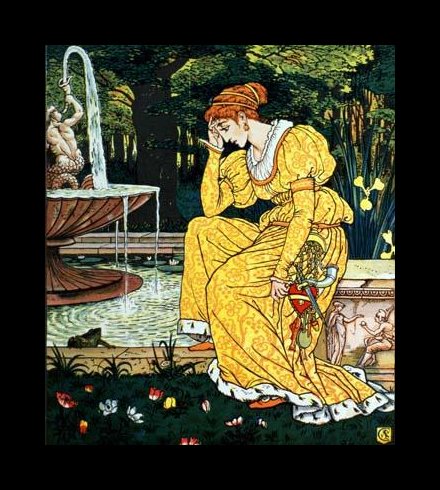
The Frog Prince and the Maiden
His first success as an artists came with his 1862 illustration “The Lady of Shalott” which he created to illustrate Tennyson’s work by the same name.
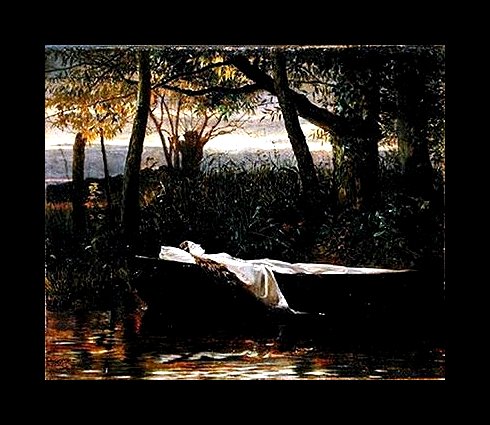
The Lady of Shalott
Although this picture was exhibited at the Royal Academy, the Academy was steadily refusing his work at this time. Eventually, Crane stopped submitting his work for exhibition and increasingly began to work on book illustrations, particularly for children’s’ stories and nursery rhymes.

Arthur Withdrawing Excalibur from the Stone

Sir Galahad
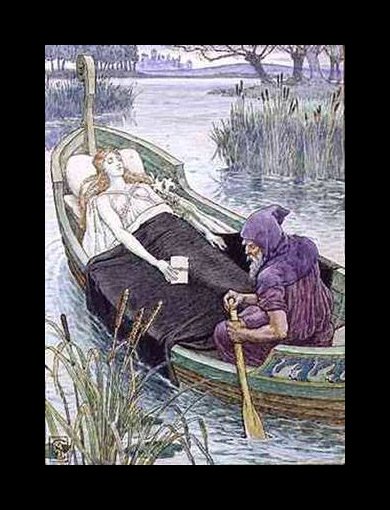
The Death Journey of the Lily Maid of Astolat
In 1871, Crane was married and took an extended trip to Italy. By 1874, Crane had established himself as a well known book illustrator and was allowed more creative freedom. His 1874 illustrations for “The Frog Prince” showed a strong Japanese-style influence.

The Frog Prince
Crane continued to create illustrations for children’s books, including nursery rhymes for “The Baby’s Opera,” as well as fairy tales and other stories by famous authors like Nathaniel Hawthorne.
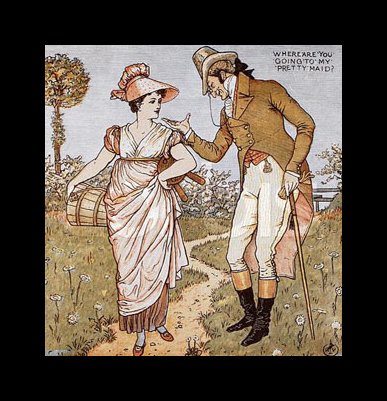
Illustration from Baby’s Opera
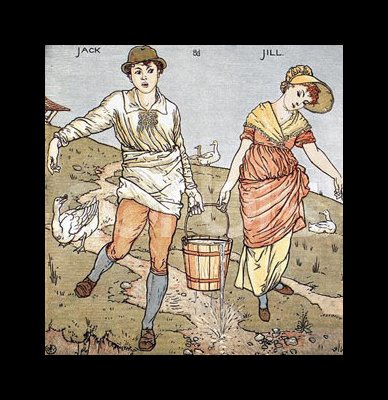
Jack and Jill, Baby’s Opera
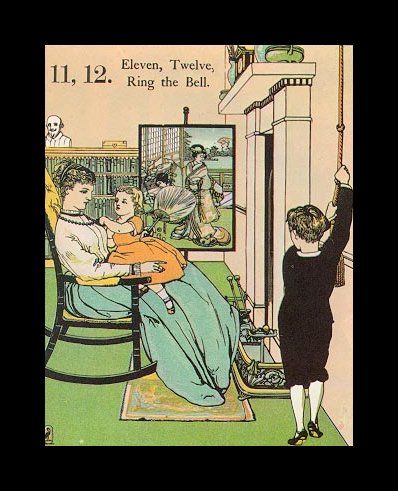
Buckle My Shoe
Crane became involved in the Socialist movement in the 1880’s as a result of his friendship with writer and decorator William Morris. Morris introduced Crane into creating art in the form of textiles, wallpaper and house decoration, all the while using his art to aide in the Socialist movement. This included providing cartoons for Socialist publications, which were eventually collected as “Cartoons for the Cause.” Crane also spent much of his time working for the Art Workers Guild, and it is said that he was more focused on achieving the ideals of Socialism through education, rather than revolution. Through his love of various mediums and his involvement in Socialism, Crane eventually became the founder of the Arts and Crafts Exhibition Society in 1888. Crane also became a member of the Water Colour Society that same year.
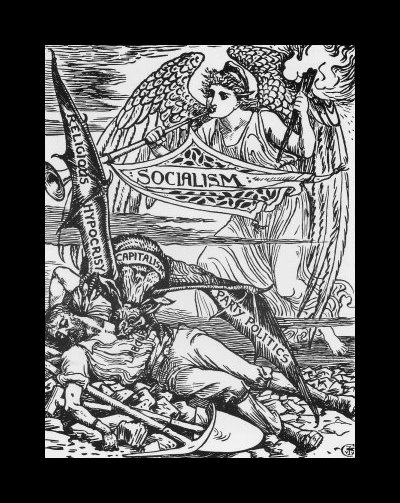
Socialist Illustrations

The Faerie Queen
Though better known for his lithographs and detailed color illustrations, Crane also created a number of easel paintings in his mature years. He exhibited regularly at the New Gallery and the Grosvenor Gallery. These paintings were primarily allegorical in subject and featured mythological characters, as well as landscapes and portraits.
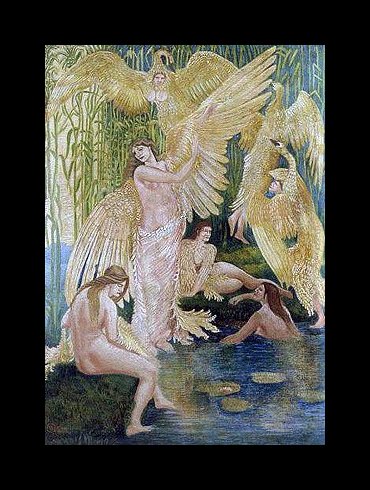
The Swan Maidens

Diana and Endymion
Throughout his life, Crane remained involved in the art world, and held a number of prestigious positions, such as the examiner for the Science and Art Department at the South Kensington Museum, and also as art director and principal for a number of schools, including the Royal College of Art.
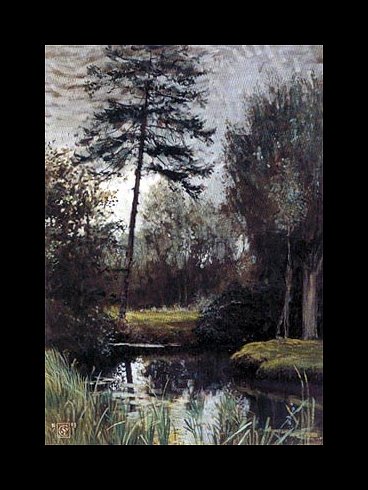
The Pool
Today, Crane’s work is one of the most frequently bid on at auction, and is prized for its beauty and elegance. Still wondering about an illustration or golden-age style painting in your family collection? Contact us…it could be by Walter Crane.
Reviews
1,217 global ratings
5 Star
4 Star
3 Star
2 Star
1 Star
Your evaluation is very important to us. Thank you.
